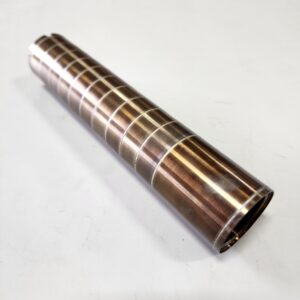Busting the Stigma: A Cop’s Guide to Buying a Suppressor
There’s still a stigma around purchasing a suppressor, but it’s time to set the record straight. Suppressors are legal, practical tools for law enforcement and civilians alike, reducing noise and enhancing safety. If you’re ready to take the plunge, here’s a no-nonsense guide to finding and buying the right suppressor (or “can”) for you.
Step 1: Choose the Right Suppressor
Picking the perfect suppressor means balancing your needs and priorities. Here are the key factors to consider:
Size vs. Sound Reduction
When it comes to how quiet a suppressor is, size and design matter. Larger suppressors are generally quieter, making them ideal if you’re aiming for “ninja quiet” performance. These tend to be pricier but excel in sound reduction. However, if you prioritize maneuverability for room clearing or duty carry, go for a shorter, thicker, and lighter suppressor. These are easier to manage on your host weapon system but may sacrifice some noise reduction.
Dedicated vs. Multi-Caliber
Do you want a suppressor dedicated to one caliber, like 5.56, or a multi-caliber can that works across 9mm, 5.56, .300 BLK, or even .308? Multi-caliber suppressors have a larger core diameter to accommodate bigger rounds, but smaller rounds may be louder due to gas escaping. At $550 or more per suppressor, a multi-caliber option can be more cost-effective and versatile if you own multiple firearms.
Direct Thread vs. HUB Mount
Mounting options come down to direct thread or HUB (universal) mounts, each with pros and cons:
- Direct Thread: Screws directly onto your firearm—no quick-detach (QD) mounts or adapters needed. It’s simple and reliable, making it ideal for agency weapons where you don’t want inexperienced officers swapping suppressors onto incompatible systems.
- HUB Mount: HUB-compatible suppressors use universal adapters (e.g., Dead Air, Yankee Hill, Rex) that work across brands. If you already own a YHM QD mount, it’ll work with any HUB-compatible can, offering flexibility for personal use.
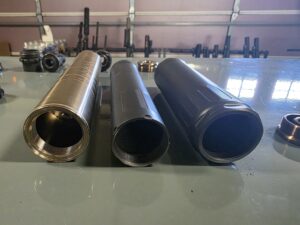
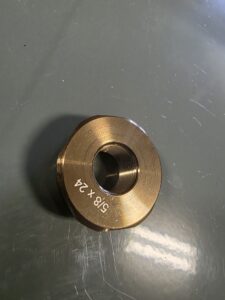

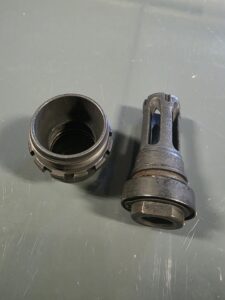
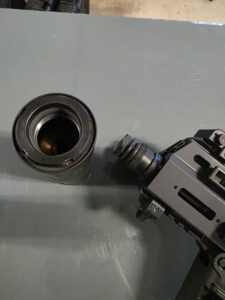
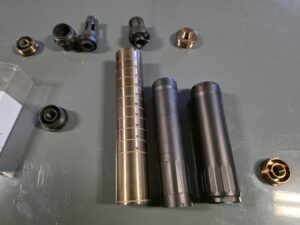
Step 2: Trust vs. Stamp
The debate between a trust and an individual stamp can be confusing, so let’s break it down:
- Individual Stamp: Tied to one person. Only you can legally possess the suppressor, and you can’t let your buddy borrow it for hog hunting without breaking the law.
- Trust: Allows multiple people (e.g., family or friends) to legally possess your NFA items. Starting in January 2026, you can transfer existing stamps to a trust for free with some paperwork. Trusts are the way to go for flexibility.
Step 3: Fingerprinting Made Easy
Skip the hassle of paper fingerprints. Go the Electronic Fingerprint Transmission (EFT) route: get your prints done once, have them emailed to you, and reuse them for future NFA applications. If you buy a suppressor from us, we’ll handle your prints. Want to SBR a rifle later? Use those same prints and a photograph, and you’re done.
Step 4: Wait Times
Good news: ATF Form 4 approvals are faster than ever. Individual applications can be approved in days, while trusts take slightly longer. The process is streamlined, so you won’t be waiting months.
Step 5: Act Now!
Ready to buy? Contact us to pay for your suppressor and, if you’re local, we’ll handle your fingerprints and photograph. We can even hold your can until January 1, 2026, when new NFA changes take effect.
Why You Can’t Wait
Here’s the cop math: With no tax stamp required starting in January 2026, demand for suppressors will skyrocket. This means:
- Supply Shortages: Manufacturers won’t keep up, and lead times could quadruple. Trust me, I’ve seen it before.
- ATF Backlog: Everyone will be filing Form 1s and Form 4s, slowing down approvals.
We have suppressors in stock now, but they won’t last. Don’t get left behind—act today!

